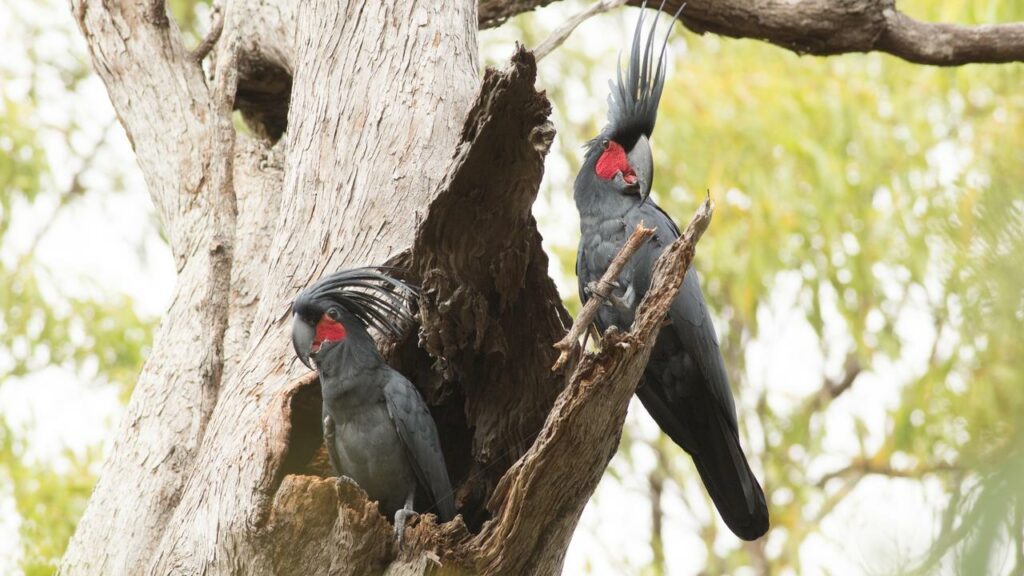Rare ‘Ringo Starr’ cockatoos drum to their own beat
Lloyd Jones |

Endangered cockatoos known as the “Ringo Starrs” of the bird world have been shown to have their own individual tool-making styles, crafting drumsticks to tap out signature beats to attract a mate.
Male palm cockatoos on Queensland’s Cape York Peninsula are known for their courtship drumming displays and research now shows they chisel individualised drumsticks with their powerful bills.
The drummer birds are special in making what are effectively musical instruments, Professor Rob Heinsohn of the Australian National University told AAP.
He has studied the large, crested birds since the 1990s after seeing a male tap out beats on a tree with a stick it had carefully trimmed and fashioned with its beak.
Prof Heinsohn and his team of researchers have published a new study showing that each individual male palm cockatoo makes his drumstick in a different way from other birds.
“We already knew they have highly personalised rhythms when they drum, allowing other birds to recognise who is drumming from a long way away,” Prof Heinsohn said.
“Now we know there is also highly individualised expression in the crafting of the tool. Watching them whittling their tools down to the shape they want is like watching a master wood sculptor at work.”
He said the use of tools among animals was rare but the use of tools for a musical display was almost unheard of.
Researchers stalked the shy and elusive birds in the lowland rainforest of the Kutini-Payamu (Iron Range) National Park where they recorded videos of the birds’ behaviour and logged around 100 nest sites.
They focused on courtship displays when the males dance, bob their heads, flush their red cheeks, raise their crests and perform drumming displays to try to attract fussy females to take up the bulky stick nests they have built in tree hollows.
Prof Heinsohn said females watched males ostentatiously snip off a seed pod or small branch then trim it to the shape and size he wants to show off the strength of his bill before tapping out a rhythmic beat with his drumstick.
“Here we had a really unusual way for animals to use tools which was effectively making a musical instrument,” he said.
“They all have their own drumming signatures, they really try to be different from each other.”
The sticks or seed pods are dropped on the ground after a display and that has enabled Prof Heinsohn’s team to collect about 250 of them over several years.
He said it’s believed the drumming displays are also used to mark a male bird’s territory and that males teach their sons to shape drumsticks and tap out beats.
The palm cockatoo is listed as endangered in Australia with no more than 1000 birds left and the population diminishing.
Prof Heinsohn said bushfires and land clearance for mining had destroyed trees the birds rely on for nest holes and they were slow breeders, with females only laying one egg every two years.
“That single chick has quite a low chance of making it,” he said.
The study will be published in Proceedings of the Royal Society London.
AAP


